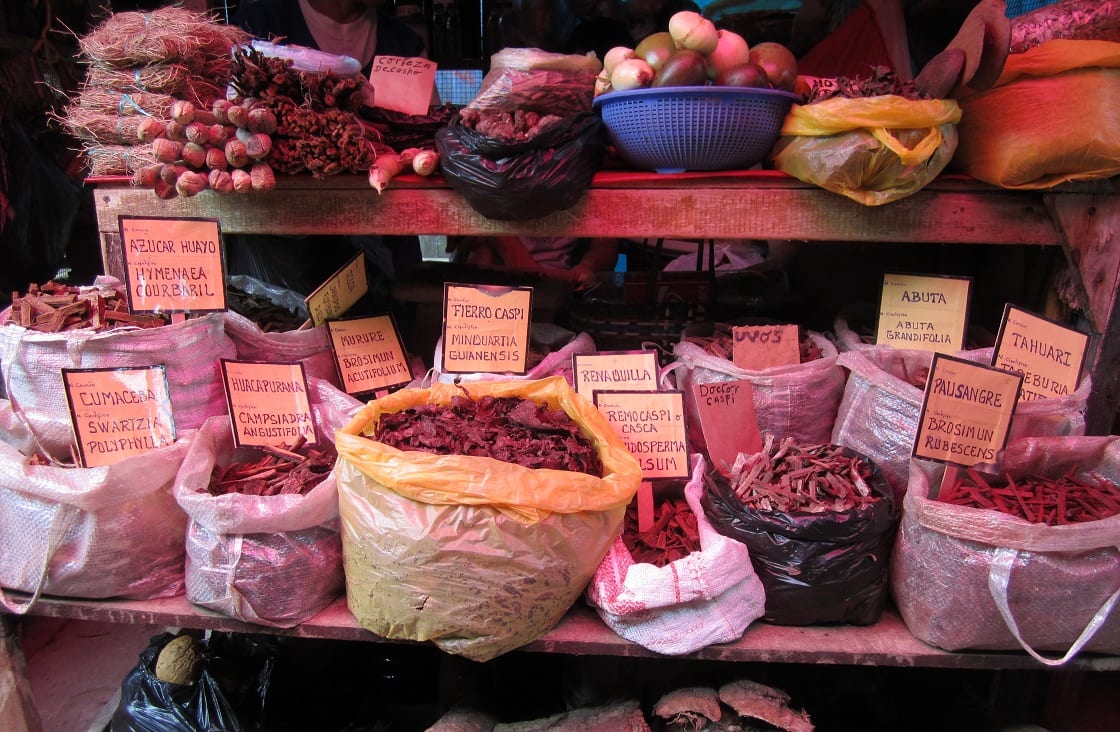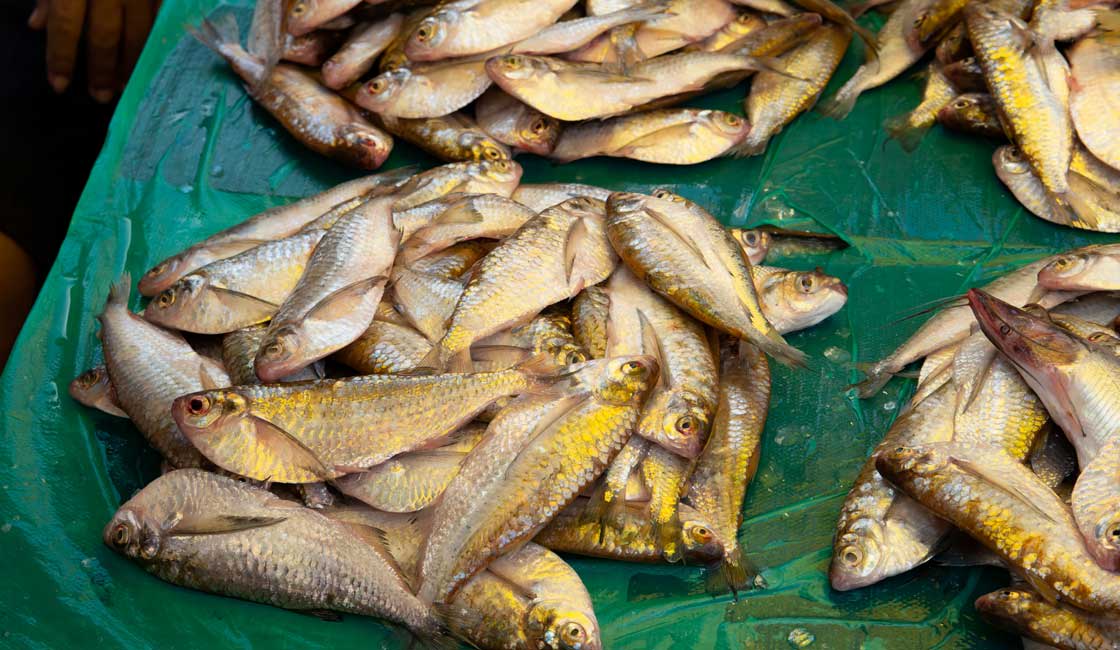
To visit Belen Market in Iquitos, Peru, is to subject the five senses to a world of stunning stimulation. One of Iquitos’ most unique attractions, Belen and its market is located on the left bank of the Itaya River, a few blocks southeast of Iquitos’ central plaza. The market dates back to the beginning of the 20th century and is still the primary source of food and supplies for the city’s residents, and a real eye-opening experience for travelers.
Belen is divided into two districts: the upper zone where the market and main warehouses are located, and the lower zone, which is a lively (and dirty) commercial zone for all manner of goods being brought from the surrounding jungles. Only the lower zone of Belen floods with the natural rise and fall of the river systems. Over the course of 100 years, there have been some advances, but one can still observe homes and businesses constructed above balsa rafts during the high-water season.
With the passage of time and the increase in population, the style has changed and more houses have been built on fixed foundations of wood or cement, with a second story. Families simply move back into their reclaimed first floor when the riverbank recedes during the dry season, now able to utilize the entire house and streets which spend half the year underwater. People in this area utilize the ubiquitous canoe for transportation daily, and it is not uncommon to see children only a few years old paddling their own canoes, demonstrating the truly aquatic nature of the culture!

Fried Fish
As one can imagine, a jungle market is a colorful place, but one must really see Belen to believe it. The market is divided into sections: a meat section, a fruit and vegetable section, a natural remedy section and a fish market (the latter two are particularly interesting). A walk down Pasaje Paquito will immerse visitors in the mysterious world of traditional medicine.
A vast array of home-made concoctions, medicinal herbs, roots, barks, and amulets from animal parts are all neatly displayed. There seems to be a remedy for anything!
Kiosks are neatly arranged with potions on display beside bags of multi-colored powders, a skull or animal skin. The sight alone transports you to a world of medicine men & witch doctors you can imagine in some old time movie about exploration. Most concoctions include a form of local aguardiente (cane liquor) which acts as a preservative.
Although this area is fascinating, one should remember that some traditional remedies do call for animal parts from protected species, and these should not be purchased. We encourage all travelers to take the time to explore this part of traditional Amazon culture, as many residents of the jungle still utilize these remedies in daily life.

Superfruit and remedies
The fish section of the market is just as interesting. The Amazon River boasts more species of fish than the entire Atlantic Ocean, so it is not hard to imagine the multitude of freshwater fish available in the market. Because waters in the Amazon and its tributaries are nearly always murky, you will likely see more species here than on your riverboat cruise. Most species are beautiful and seem more prehistoric than anything.
For the brave, it is possible to sit down and eat a fresh dish prepared on the spot: a very authentic experience but perhaps only for those with steel-plated stomachs! As always, we discourage travelers to purchase or eat species that are protected, such as the Paiche (Arapaima gigas), unless you are certain that they have come from a certified fish farm.
It is important to note that although most people (vendors or shoppers) you encounter in the markets are friendly and accommodating, there are instances of petty theft, so it is best to visit Belen accompanied by an experienced guide and to leave valuable personal belongings safely in your hotel. It is recommended to visit Belen only in the morning, not only for safety purposes but to see all the market goods at their freshest.
To travel and learn about new cultures is life-changing. If you are planning on visiting Iquitos, we highly recommend a visit to the Belen market on your trip to Iquitos as an important step to understanding the culture of the Amazon.
While Rainforest Cruises aim to provide accurate and up-to-date information, we make no representations as to the accuracy or completeness of any information herein or found by following any link on this site. Rainforest Cruises cannot and will not accept responsibility for any omissions or inaccuracies, or for any consequences arising therefrom, including any losses, injuries, or damages resulting from the display or use of this information.




